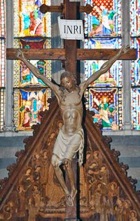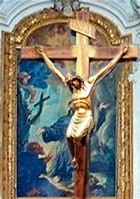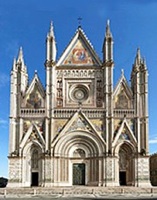
Duomo, Orvieto
Lorenzo Maitani was first documented in 1295 in his native Siena. Other documents indicate that he was still resident there in 1295 and in 1302, the year of his marriage. In a document of 1310, the Signori Sette of Orvieto named him as “universalis capud magister” (probably project manager for all aspects of construction) at the Duomo. They also awarded him citizenship of Orvieto, exempted him from taxation and gave him the privilege of carrying weapons. He spent the last twenty years of his life in the city.
In 1319, the Perugian authorities requested from their peers in Orvieto that Lorenzo Maitani might be allowed to stay in Perugia for a period. Documents indicate that he remained there until 1321. This was presumably to work in association with his brother, Ambrogio Maitani, who was documented as city architect there in the period 1317-46.
Angelo da Orvieto seems to have been trained by Lorenzo Maitani.
Orvieto
Duomo
The document of 1310 mentioned above records that Lorenzo Maitani had initially been retained (probably two years before) to address a crisis of confidence in the stability of the vaulted apse and crossing of the Duomo, and that he had solved the problem by erecting three pairs of buttresses. It also records that work was about to begin:
-
✴on the wooden roof of the nave; and
-
✴on the facade. The second of two preparatory drawings for the design of the facade that survive in the Museo dell’ Opera del Duomo, which is closer than the other to the structure that was actually built, is usually attributed to Lorenzo Maitani.
Lorenzo Maitani built the new rectangular tribune in 1328
Marble reliefs (1310-30)
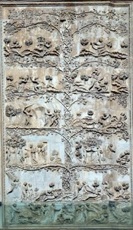
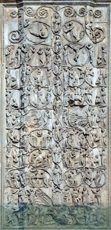
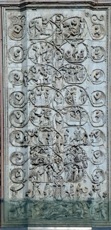
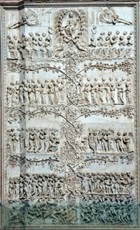
1st pier 2nd pier 3rd pier 4th pier
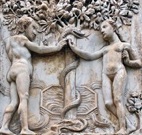
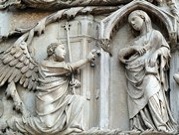
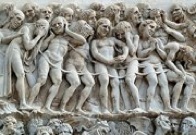
Forbidden Fruit Annunciation Damnation
1st pier 3rd pier 4th pier
The document mentioned above remarks that Lorenzo Maitani was experienced in “[creating] wall[s] figured with beauty, which wall must be made in [the facade], and with all other masteries and ornaments appropriate to this same fabric”. This is usually taken to indicate that, inter alia, he orchestrated the carving the 162 reliefs on the four piers in the lower register of the facade. The actual execution seems to have been the work of two (probably Sienese) workshops:
-
✴One workshop produced the reliefs for the outer piers, in which the reliefs are carved in rectangular fields separated by carved vines. These depict:
-
•scenes from Genesis; and
-
•Old Testament prophecies of the Redemption.
-
✴The other produced those for the inner piers, in which the reliefs are carved in oval frames separated by the branches of Trees of Jesse. These depict:
-
•scenes from the life of Christ and the Virgin; and
-
•the Last Judgment.
Some parts of the upper scenes are unfinished, and work might have been terminated by Maitani 's death in 1330.
Crucifix (ca. 1320)
Symbols of the Evangelists (ca. 1330)
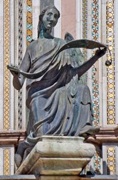
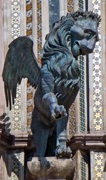
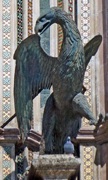
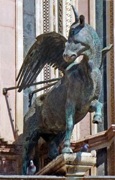
Symbols of: St Matthew St Mark St John St Luke
Lorenzo Maitani is mentioned in connection with the purchase of bronze for the eagle (the symbol of St John): he might have been responsible for the execution of this and the other bronze symbols of the Evangelists on the facade.
Crucifix (ca. 1300)
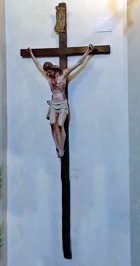
Crucifix (ca. 1320)
Restoration of the Civic Fountain
Lorenzo Maitani restored the civic fountain (1276) in what is now Piazza della Repubblica (see Walk II) in 1324. Unfortunately later later demolished.
Montefalco
The papal rector of the Duchy of Spoleto Jean d' Amiel (1322-33) made a payment to Lorenzo Maitani in 1324 for advice on the construction of a fortress next to San Fortunato. Work continued into the early 1330s on what became known as the Palazzo Vecchio.


